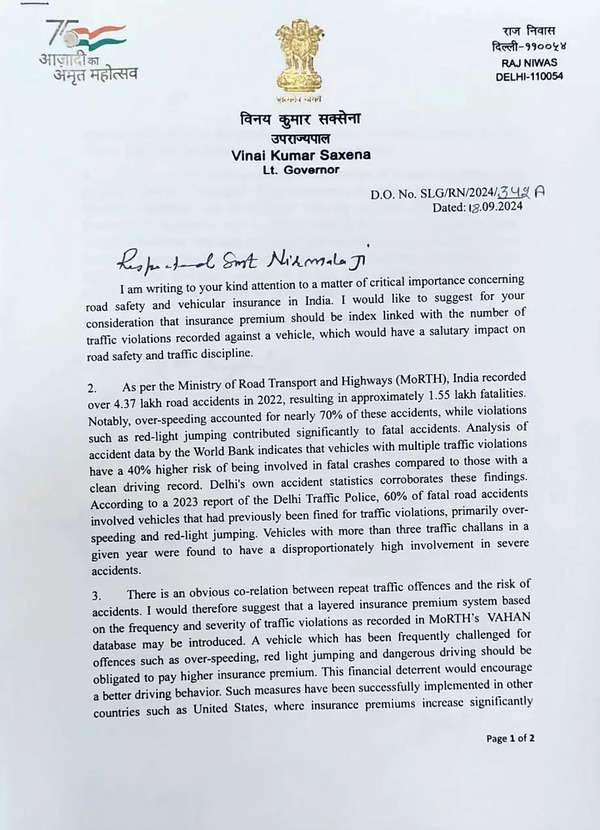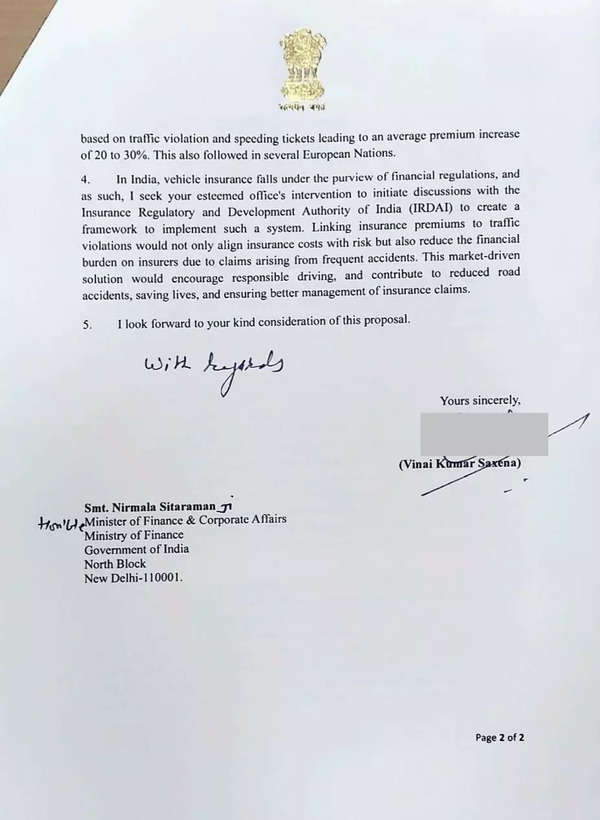NEW DELHI: Delhi Lieutenant Governor (LG) VK Saxena has written to Union finance minister Nirmala Sitharaman, advocating for a system that links vehicle insurance premiums to the number of traffic violations recorded against each vehicle. In his letter, Saxena underlined the critical importance of this proposal for enhancing road safety and promoting responsible driving behavior.
“I am writing to your kind attention to a matter of critical importance concerning road safety and vehicular insurance in India,” Saxena wrote. “I would like to suggest for your consideration that insurance premiums should be index-linked with the number of traffic violations recorded against a vehicle, which would have a salutary impact on road safety and traffic discipline.”
The proposal comes in the wake of alarming statistics from the ministry of road transport and highways (MoRTH), which reported over 437,000 road accidents in 2022, resulting in approximately 155,000 fatalities. Saxena noted that over-speeding accounted for nearly 70% of these accidents, while violations like red-light jumping also significantly contributed to fatalities.


Analysis from the World Bank revealed that vehicles with multiple traffic violations have a 40% higher risk of being involved in fatal crashes compared to those with a clean record. This trend is echoed in Delhi’s own traffic statistics, with a 2023 report from the Delhi Traffic Police indicating that 60% of fatal road accidents involved vehicles previously fined for traffic violations, primarily over-speeding and red-light jumping.
Saxena further explained, “There is an obvious correlation between repeat traffic offences and the risk of accidents. I would therefore suggest that a layered insurance premium system based on the frequency and severity of traffic violations, as recorded in MoRTH’s VAHAN database, may be introduced.” He proposed that vehicles frequently cited for offences such as over-speeding and dangerous driving should be subjected to higher insurance premiums as a financial deterrent to encourage safer driving habits.
He cited examples from other countries where similar systems are in place. “Such measures have been successfully implemented in other countries such as the United States, where insurance premiums increase significantly based on traffic violations and speeding tickets, leading to an average premium increase of 20 to 30%,” he said. He also mentioned that several European nations have adopted similar practices.
In his letter, Saxena requested the finance minister’s intervention to initiate discussions with the Insurance Regulatory and Development Authority of India (IRDAI) to create a framework for implementing this system. “Linking insurance premiums to traffic violations would not only align insurance costs with risk but also reduce the financial burden on insurers due to claims arising from frequent accidents,” he added. “This market-driven solution would encourage responsible driving, contribute to reduced road accidents, save lives, and ensure better management of insurance claims.”
